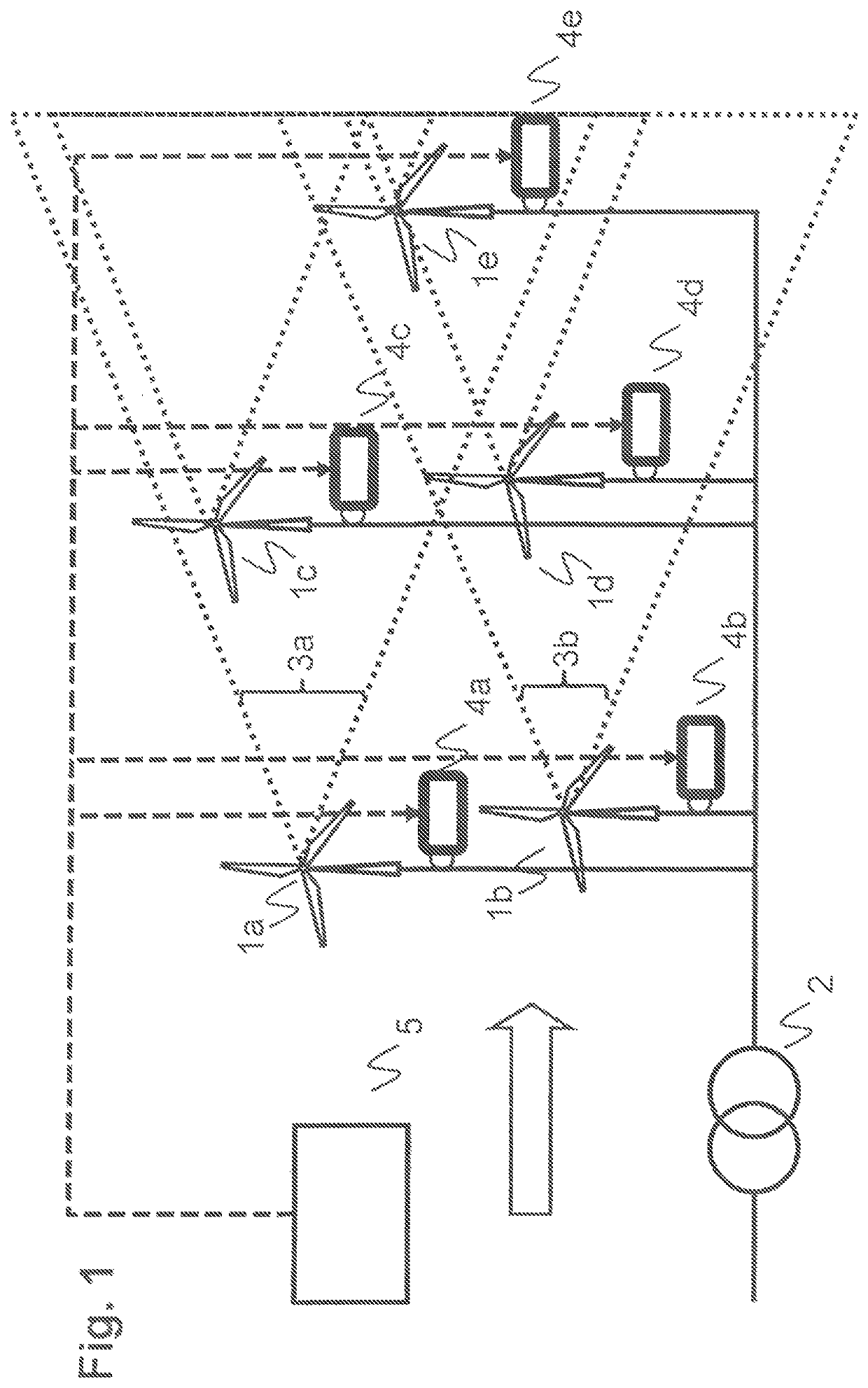Wind farm inertial response
a technology of wind farm and inertial response, which is applied in the control of electric generators, machines/engines, and final product manufacturing, etc., can solve the problems of low wind speed of downstream or downwind turbines, turbulent wind conditions, and inability to store electrical energy in large amounts within an electricity distribution network, so as to achieve accurate optimization results, precise and accurate and reliable prediction of wind conditions
Active Publication Date: 2020-03-31
HITACHI ENERGY LTD
View PDF19 Cites 4 Cited by
- Summary
- Abstract
- Description
- Claims
- Application Information
AI Technical Summary
Benefits of technology
This approach enables precise and dynamic frequency support, optimizing active power output and reducing frequency deviations, enhancing the overall stability and efficiency of wind farm operations by accounting for inter-turbine wake effects and wind conditions.
Problems solved by technology
However, due to this energy extraction by upstream or upwind turbines, the downstream or downwind turbines experience lower wind-speeds and turbulent wind conditions.
Depending on the settings of these actuators the turbine can extract different amounts of energy, but these settings also directly influence the resulting wakes and thus the power generation at downwind turbines.
Electrical energy cannot easily be stored in large amounts within an electricity distribution network, commonly referred to as a grid, by conventional means.
Method used
the structure of the environmentally friendly knitted fabric provided by the present invention; figure 2 Flow chart of the yarn wrapping machine for environmentally friendly knitted fabrics and storage devices; image 3 Is the parameter map of the yarn covering machine
View moreImage
Smart Image Click on the blue labels to locate them in the text.
Smart ImageViewing Examples
Examples
Experimental program
Comparison scheme
Effect test
first embodiment
[0037]FIG. 1 the invention with local frequency support control;
second embodiment
[0038]FIG. 2 a second embodiment with central frequency support control;
[0039]FIG. 3 a controller architecture;
[0040]FIG. 4 an exemplary reserved power and output power distribution in wind direction;
[0041]FIG. 5 a dynamic frequency support of a PFC type; and
[0042]FIG. 6 a dynamic frequency support of an inertial control type.
the structure of the environmentally friendly knitted fabric provided by the present invention; figure 2 Flow chart of the yarn wrapping machine for environmentally friendly knitted fabrics and storage devices; image 3 Is the parameter map of the yarn covering machine
Login to View More PUM
 Login to View More
Login to View More Abstract
The present invention is concerned with an operation of a wind farm with a plurality of wind turbines in view of a dynamic frequency response. According to the invention, dynamic frequency support and power production for all wind turbines in a wind farm are handled concurrently in a single optimization step and taking into account wake effects within the wind farm as well as optional wind forecast information. The dynamic frequency support capability of the entire wind farm is planned in advance according to grid requirements and power system condition changes. While existing methods de-load wind turbines with a static percentage in order to supply additional power when needed, the proposed method incorporates the dynamic frequency support into the optimal operation system of wind farm.
Description
FIELD OF THE INVENTION[0001]The invention relates to the operation of a wind farm including a plurality of electrically interconnected wind turbine generators. Specifically, it relates to an operation of the wind farm in view of a support or stabilization of a grid frequency of an electrical power transmission grid connected to the wind farm.BACKGROUND OF THE INVENTION[0002]In a wind farm or wind power plant with a plurality of wind turbines, the first row of turbines that are reached by the unimpeded flow of air mass may extract a maximum amount of kinetic energy. However, due to this energy extraction by upstream or upwind turbines, the downstream or downwind turbines experience lower wind-speeds and turbulent wind conditions. This phenomenon, widely known as ‘wake effect’, may have an impact on an amount of electrical energy generated by downstream wind turbines as well as on fatigue load or other degradation of downstream wind turbine components.[0003]In conventional wind farm m...
Claims
the structure of the environmentally friendly knitted fabric provided by the present invention; figure 2 Flow chart of the yarn wrapping machine for environmentally friendly knitted fabrics and storage devices; image 3 Is the parameter map of the yarn covering machine
Login to View More Application Information
Patent Timeline
 Login to View More
Login to View More Patent Type & Authority Patents(United States)
IPC IPC(8): F03D9/00H02P9/04F03D7/04F03D7/02F03D9/25
CPCF03D9/257F03D7/048F03D7/0284H02P9/04F05B2270/304F05B2270/329F05B2260/8211F05B2270/20Y02E10/725F05B2270/328F05B2270/335F05B2270/337Y02E10/723F05B2270/107Y02E10/72Y02P70/50F05B2270/204
Inventor ZHANG, YANPOLAND, JANTIMBUS, ADRIAN VASILEFRANKE, CARSTENKULKARNI, KEDARMASTELLONE, SILVIA
Owner HITACHI ENERGY LTD
Features
- R&D
- Intellectual Property
- Life Sciences
- Materials
- Tech Scout
Why Patsnap Eureka
- Unparalleled Data Quality
- Higher Quality Content
- 60% Fewer Hallucinations
Social media
Patsnap Eureka Blog
Learn More Browse by: Latest US Patents, China's latest patents, Technical Efficacy Thesaurus, Application Domain, Technology Topic, Popular Technical Reports.
© 2025 PatSnap. All rights reserved.Legal|Privacy policy|Modern Slavery Act Transparency Statement|Sitemap|About US| Contact US: help@patsnap.com



